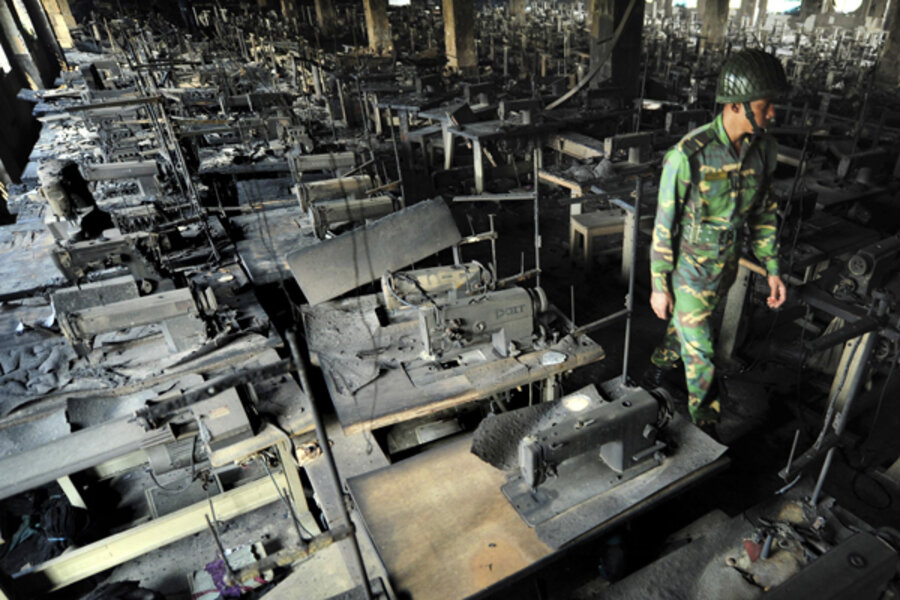Deadly Bangladesh garment factory fire spotlights poor working conditions
Loading...
| Dhaka, Bangladesh
Just after a fire killed at least 112 workers at a garment factory in the outskirts of Dhaka, Bangladesh, another 10-story factory caught fire Monday morning, and thousands took to the streets to protest the factories’ poor safety standards.
Though no one was killed in the second fire, during both fires the main doors to the factories were reported to be padlocked, blocking easy escape.
The protests put a spotlight on the poor working conditions, lack of fire escapes, and garment owner negligence that has racked the world's second-largest garment-exporting country, where firms produce clothing for high-profile brands including Gap, H&M, and Wal-Mart.
“Every time these incidents occur, the owners get away without making any change to their working conditions inside the factories,” says Sultan Uddin Ahmmed, assistant executive director of Bangladesh Institute of Labor Studies (BILS). “These incidents will have to be treated as an offense in order to stop such occurrences.”
Bangladesh's garment industry employs 4 million people, 3 million of them women, at some 4,500 factories, says Siddiqur Rahman, a vice president of the Bangladesh Garment Manufacturers and Exporters Association (BGMEA). And between 1990 and 2012, there have been at least 33 major fires in garment factories, claiming some 500 lives, according to BILS.
The 2006 Bangladesh Labor Law and the Factories Rules of 1979 would be strong laws if they were applied effectively, says Babul Akhter, president of the Bangladesh Garment and Industrial Workers’ Federation, a national trade union federation. Both legal frameworks stress the welfare of workers and settlement of disputes between workers and employers. To date, however, none of the factory fires have had a conclusive investigation, nor has anyone been found responsible.
The Factories Rules require specific provisions for escape in the event of an emergency for factory buildings housing explosive or highly flammable materials: "The means of escape shall include at least two separate and substantial stairways permanently constructed either inside or outside the building and which afford direct and unimpeded access to ground level."
Garment factories have had problems since the early 1990s, when the industry was developing. “Unfortunately, the owners pay no heed to ensure the minimum safety standards inside the buildings,” says Selim Newaj Bhuiyan, a former deputy director of the Fire Service and Civil Defense in Bangladesh.
That's because the rules are easy to get around, say observers.
Though international buyers often require that factories meet the safety and requirements, often the auditors representing them are not well trained, says Mr. Selim, which entices owners to save money by only appearing to adhere to standards.
When the industry was just starting, there was a government push to expand, says an insider within the fire service. That push encouraged looking the other way when it came to safety inspections, at least temporarily. “In the initial stage, for the expansion of industry, the fire service issued warehouse or workshop license to buildings, overlooking many compliance issues,” says the insider.
But the practice has continued even as Bangladesh's garment industry, which currently makes up some 80 percent of its export revenue, has boomed. The sector earned $19 billion in the financial year that ended in June 2012.
Many activists and workers blame the factory owners.
The gates are padlocked primarily for two reasons, says Mr. Akhter, “so that workers do not leave the workplace or raw materials and goods do not get stolen.”
But he says that if cameras were installed and security guards present, they wouldn’t have to lock the doors.
“It comes as a moral responsibility for the owners to ensure the fire safety standards," he says. "Locking the exits at the stairways means that the owners prioritize their goods and raw materials over the lives of the workers,” he says.








